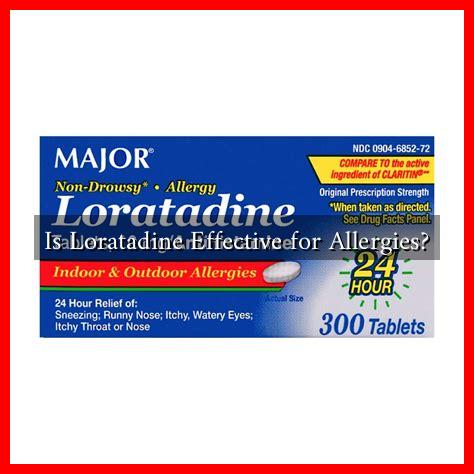-
Table of Contents
Is Loratadine Effective for Allergies?
Allergies affect millions of people worldwide, causing discomfort and impacting daily life. Among the various treatments available, loratadine has emerged as a popular choice for managing allergy symptoms. This article explores the effectiveness of loratadine, its mechanism of action, potential side effects, and comparisons with other antihistamines.
Understanding Loratadine
Loratadine is a second-generation antihistamine commonly used to relieve symptoms associated with allergic rhinitis (hay fever) and chronic urticaria (hives). Unlike first-generation antihistamines, loratadine is less likely to cause drowsiness, making it a preferred option for many individuals.
How Loratadine Works
The effectiveness of loratadine lies in its ability to block the action of histamine, a substance produced by the body during an allergic reaction. When allergens such as pollen, dust mites, or pet dander enter the body, histamine is released, leading to symptoms like sneezing, itching, and runny nose. Loratadine works by:
- Inhibiting the H1 receptor, which prevents histamine from exerting its effects.
- Reducing inflammation and mucus production in the nasal passages.
- Providing relief from itching and swelling associated with hives.
Clinical Evidence Supporting Loratadine’s Effectiveness
Numerous studies have demonstrated the efficacy of loratadine in treating allergy symptoms. A meta-analysis published in the Journal of Allergy and Clinical Immunology reviewed multiple clinical trials and found that loratadine significantly reduced symptoms of allergic rhinitis compared to placebo. Key findings include:
- Patients reported a 50% reduction in nasal congestion and sneezing.
- Improvement in overall quality of life scores among users.
- Effective for both seasonal and perennial allergic rhinitis.
Another study published in the British Journal of Dermatology highlighted loratadine’s effectiveness in managing chronic urticaria, showing a significant decrease in itch severity and hives after just a few days of treatment.
Comparing Loratadine with Other Antihistamines
While loratadine is effective, it is essential to compare it with other antihistamines to understand its place in allergy management. Here’s how loratadine stacks up against some common alternatives:
- Cetirizine: Another second-generation antihistamine, cetirizine may cause more sedation than loratadine but is often more effective for severe symptoms.
- Fexofenadine: Known for its rapid onset of action, fexofenadine is less sedating than first-generation antihistamines but may not be as effective for some individuals as loratadine.
- Diphenhydramine: A first-generation antihistamine, diphenhydramine is highly effective but often causes significant drowsiness, making it less suitable for daytime use.
Potential Side Effects of Loratadine
While loratadine is generally well-tolerated, some individuals may experience side effects, including:
- Headache
- Dry mouth
- Fatigue
- Gastrointestinal disturbances
It is crucial for users to consult with healthcare professionals before starting any new medication, especially if they have pre-existing health conditions or are taking other medications.
Conclusion
Loratadine is an effective option for managing allergy symptoms, particularly for those seeking relief without the sedative effects associated with first-generation antihistamines. Clinical studies support its efficacy in treating allergic rhinitis and chronic urticaria, making it a valuable tool in allergy management. However, individual responses may vary, and it is essential to consult with a healthcare provider to determine the best treatment plan tailored to specific needs.
In summary, loratadine stands out as a reliable choice for allergy sufferers, offering a balance of effectiveness and minimal side effects. As with any medication, understanding its benefits and limitations is key to achieving optimal relief from allergy symptoms.

